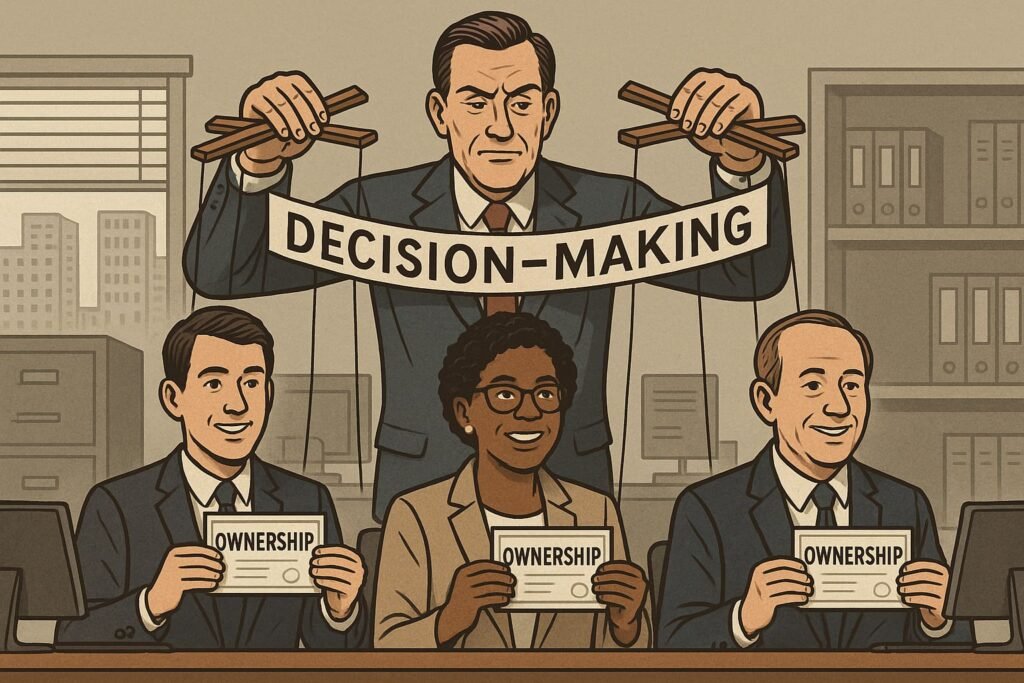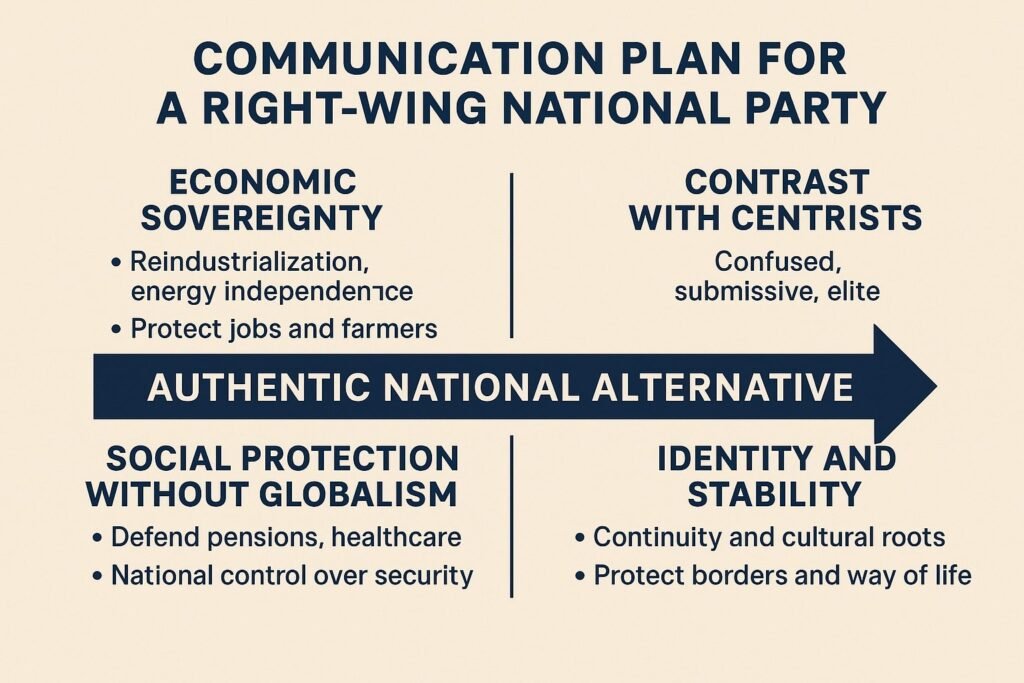Employee Ownership Explained – Capitalism’s Friendly Face
“Own a piece of the company,” they say — as if a few shares make you a partner in the boardroom.
Employee ownership is capitalism’s attempt to look democratic: everyone’s an owner, no one’s exploited. In reality, it’s more like being handed the steering wheel of a car that’s already on cruise control.
Table of contents
What Employee Ownership Actually Means
Employee Ownership Programmes (EOPs) or Employee Stock Ownership Plans (ESOPs) give workers a financial stake in their company.
That might be:
- Shares handed out directly.
- Options to buy shares later at a discount.
- Or a trust that holds shares collectively on behalf of staff.
On paper, it sounds empowering — workers sharing in the wealth they help create. In practice, it’s usually a perk dressed up as a revolution.
How It’s Sold
The corporate sales pitch is smooth:
- “It aligns employees’ interests with shareholders.”
- “It boosts engagement and retention.”
- “It rewards loyalty and hard work.”
It’s framed as a moral upgrade to capitalism — a sort of “capitalism with feelings.”
Governments love it too: it makes companies look responsible without needing new labour laws or unions.
This glossy moral branding sits neatly beside Woke Capitalism Explained — the trend where corporations perform virtue while protecting power.
How It Really Works
Most employee ownership plans:
- Don’t give real power. Shares rarely come with meaningful voting rights.
- Aren’t liquid. You can’t easily sell your shares — they’re trapped until you leave or retire.
- Add risk, not reward. If the company goes under, employees lose both income and investment.
- Keep decision-making centralised. Ownership without control is just optics.
So while you “own” a slice of the business, you still take orders from people who own the decisions.
It’s the same sleight of hand that fuels DEI Explained — policies that claim inclusion while enforcing conformity.
A Convenient Exit Strategy
There’s another side to this “ownership revolution” — and it’s the part founders love most.
When owners want to cash out, selling to employees through an ownership scheme is often the smoothest, safest exit.
No private equity sharks, no hostile takeovers — just a friendly internal transaction that keeps control close.
Even better, employees are now emotionally invested in keeping the company’s valuation high, because their shares depend on it.
That pressure conveniently aligns with the major shareholders’ interests: the higher the value, the better their payout.
In short, employee ownership gives founders a clean conscience and a clean exit.
The Bureaucratic Goldmine
And let’s not forget the bureaucracy. These schemes are expensive to design, run, and audit.
Every year they generate a small fortune in fees for lawyers, accountants, and valuation consultants — the middlemen of moral capitalism.
For the professional class, it’s heaven: complex compliance, shifting valuations, endless paperwork — all billed hourly.
For employees, it’s just another HR ritual with a spreadsheet attached.
It’s not empowerment. It’s a paperwork performance of ownership.
Who Actually Benefits
- Founders get a soft exit — selling to employees at a friendly price, tax-advantaged, and PR-approved.
- Executives get a loyalty boost and a moral halo.
- Lawyers and accountants get a recurring revenue stream.
- Governments get headlines about “inclusive capitalism” without touching inequality.
Meanwhile, employees get certificates and slogans — “owners” in name, not influence.
It’s the corporate version of empowerment theatre — much like ESG and DEI: loud on values, quiet on accountability.
In Practic
Famous “employee-owned” firms like John Lewis in the UK are often cited as proof the model works. But even there, employees don’t vote on strategy, layoffs, or executive pay. They’re “partners” — right up until the company needs to cut jobs.
Employee ownership isn’t a scam — but it’s not a revolution either. It’s capitalism’s conscience management system: make workers feel valued, while the money and power quietly move elsewhere.
The Irony
The promise is ownership. The result is obedience.
It’s the perfect symbol of modern work: everyone’s empowered — just not enough to make a difference.
FAQ
What’s the difference between employee ownership and co-ops?
Co-ops are run democratically — employees vote on decisions. Employee ownership schemes usually aren’t.
Do employees get rich from ownership plans?
Rarely. Unless you’re at an early-stage startup that explodes in value, the “ownership” is symbolic.
Why do companies like these programmes?
They improve loyalty, optics, and tax efficiency — while offering founders an easy, moral-looking exit.



